Anna Eyler Chosen for Prestigious Program at Michigan State
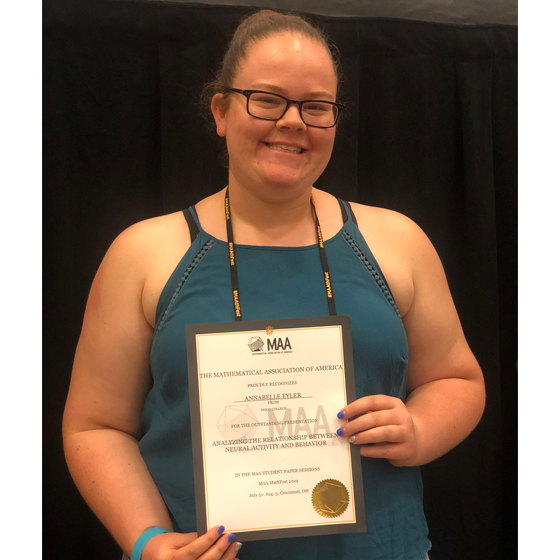
Anna Eyler spent the summer applying mathematics to neuroscience and won an award for best presentation for her work.
Anna Eyler
Graduation Year
2021
Program
- Mathematics (B.A.)
Department
- Mathematics
This summer, I was selected to be a part of Michigan State University’s NSF/NSA 2019 Summer Undergraduate Research Experience in Mathematics (SURIEM) Program. This prestigious program had thousands of undergraduate applicants, and I was chosen to be one of the 18 participants to do mathematical research.
Through this program, I was working in the neuroscience field looking for a correlation between brain activity and body movement. My group was working toward a more neurological understanding to explain motion, using rodents. We were looking to identify characteristics that would be able to pick out different abnormalities both physically and mentally. To test our methods, we were given video recordings of rodents that underwent denervation, which is where the main nerve in one of their paws is completely removed such that it cannot regenerate, to simulate an amputated limb.
With other members of my program, I was able to use a neural network called DeepLabCut to assist in the rodent recognition. This network requires human annotation input to process movement videos. With human annotation comes errors in defining the characteristics for the neural network to analyze. I was able to calculate the percent error of the human input to make sure it was minimal before analysis through the neural network computer software.
With data from DeepLabCut, we calculated distance, velocity and acceleration for each observation. These numbers were then used to see if there was a quantitative difference between rodents that were experiencing phantom pain due to denervation in one of their front paws. As a math major, I analyzed the data using statistics and linear regression techniques, which is a line of best fit to represent and model the data. My group was able to determine that, on average, there was no large-scale overall difference between the control and injured (denerved) rodents. Our findings were synonymous with the previous studies, such that there is no clear division between groups studied. In the future for this project, the focus will be to see if a difference can be seen between a rodent before and after denervation to compare to what that rodent’s normal movement was.
The week after I completed my research program, I was able to attend this year’s Mathematical Association of America (MAA) national conference, MathFest, which was held in Cincinnati, Ohio. At MathFest, there were many different events going on, one of which was the 2019 MAA MathFest Undergraduate Mentoring Workshop Supporting Women. During this day, I was able to network with other female undergraduates, most of whom also did research over the summer. In the workshop, it was educational to interact with both panels: one with graduate students and another panel of women in academia.
At MathFest, I also presented the research from my time at Michigan State University. My talk, titled “Analyzing the Relationship Between Neural Activity and Behavior,” discussed the current findings of my research group. At MathFest, my presentation was one of the 10 highest scoring presentations out of more than 220 undergraduate presentations.
I was able to go to Michigan State University for my internship, attend MathFest, present, and attend a workshop all through the generosity of the Volpe Scholars Program.
Research
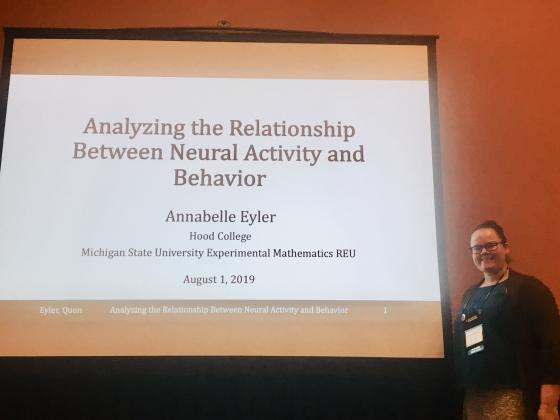
Anna at her presentation.
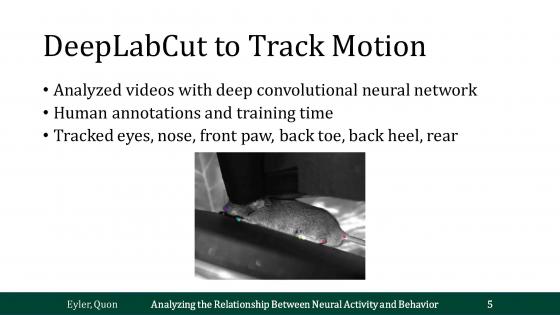
DeepLabCut software tracked motion of rodents.
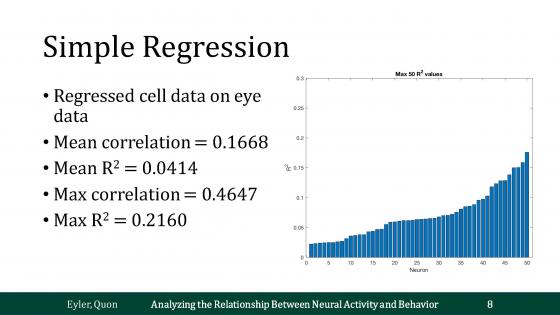
A graph showing data from the research.
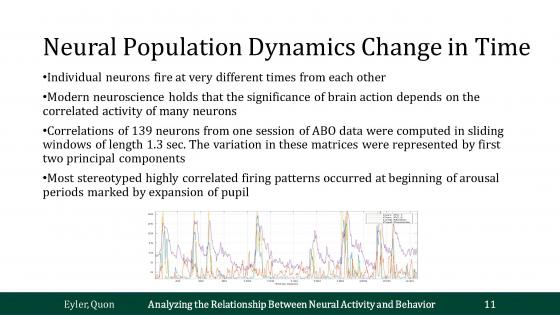
Chart showing neuron firing activity.
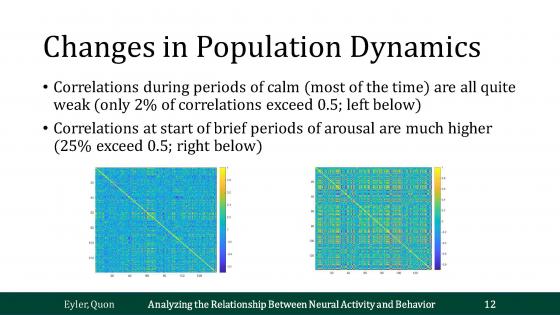
Charts showing difference in neural activity between calm and active times.
Are you ready to say Hello?
Choose a Pathway
Information will vary based on program level. Select a path to find the information you're looking for!
